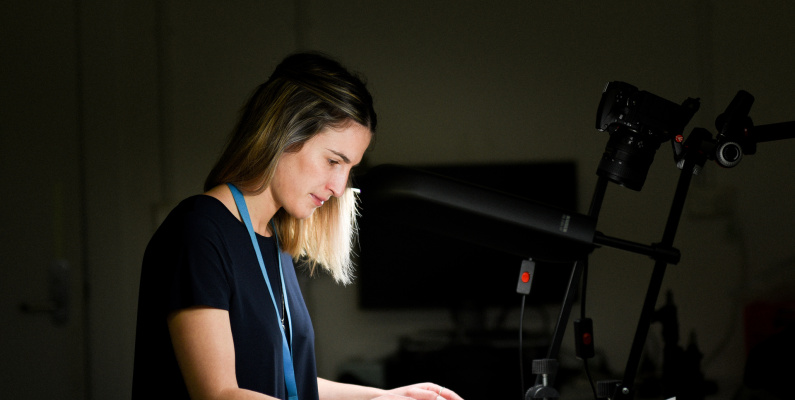
The first time I visited Otago Museum, I was transported by the history of the cultures and environments displayed within it. When I started volunteering here in June 2018, I was excited to help the Museum unlock its own history by digitising newspaper clippings stored in hefty handmade volumes in the Museum’s library.
For the past 100 years, Otago Museum staff have collected newspaper articles from the Evening Star, the Otago Daily Times, and various other publications that mention or are relevant to the Museum. By digitising these articles, we can piece together a chronological record of significant events as seen through the eyes of Dunedin residents of old. However, their current uncatalogued state does not allow these stories to shine.
My mission is to tackle the monumental task of digitising and cataloguing these stories.
Image: Book of Otago Museum Press Clippings. By Kane Fleury © Otago Musuem
Once finished, the Museum will have a searchable database that provides a narrative of the Museum, including insights into the history of the building, staff members, and specific items within the collection. Imagine typing “moa” into a search engine and uncovering every newspaper article related to moa currently contained within these volumes.
The Museum will also be able to easily find articles that chronicle archaeological finds, new acquisitions, and exhibitions. Who knows, one day, this database may result in a timeline outlining the collection of moa remains throughout the history of the Museum, or new stories about your favourite artefacts told by tour guides.
But this is a long process, and I have only just started.
First, each article is photographed, processed, and given a unique identifier. Then, I read each article and put information into a spreadsheet, including the title, date, topic, and keywords. After this is complete, the photos and information will be uploaded to the Museum’s collection management system to provide a searchable database.
So, what have I learned so far?
Currently, the years 1919 to 1968 have been photographed and given unique identifiers. The years 1919 to 1948 have been read and entered into the spreadsheet. Between 1919 and 1948 the Humanities Collection at the Museum, under the leadership of Dr H D Skinner, was expanding rapidly. Many articles chronicle the acquisition of new artefacts, including the carved Māori meeting house, Mataatua Wharenui (which has since been returned to its original home of Whakatāne), and many items from the Pacific Islands. Also during this time, the Fels Wing opened, allowing the number of artefacts on display to increase significantly.

Image: Otago Daily Times newspaper clipping from 13 January 1948. © Otago Daily Times
The year 1948 also marked the Otago Centennial, which Otago Museum celebrated in a number of ways, including a display presented in the Fels Wing, and also taking part in a parade called the ‘Cavalcade of Progress’. The Museum’s contribution to the parade was a group of women dressed in replica 1848 bridal attire atop a greenery-covered float.
Both the display and the parade float marked a distinct difference between the fashion of the pioneer women and that of the modern women of 1948 who were viewing the garments. The elaborate and voluminous skirts of the 1840s must have seemed very different to the simplified silhouettes that marked post WWI fashion at the time. This difference can be seen today in the People of the World gallery’s Dress for Success exhibit, which houses a 1870s bustle dress and 1920s wedding gown.
As I journey through the Museum’s history, I hope to uncover more stories like this one!
Top Image: Nora Schlenker at work. By Kane Fleury © Otago Museum

